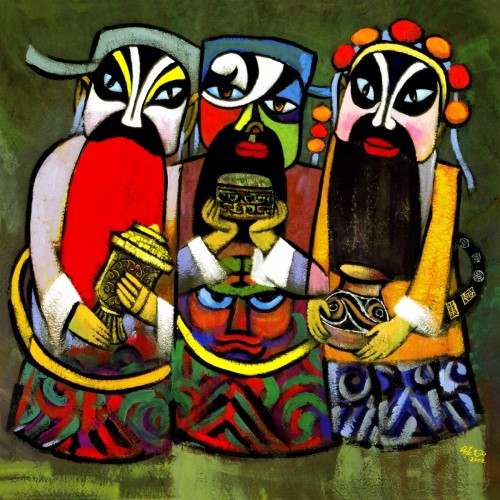by Admin
Share
Share

We gather for a Worship Service on this Sunday, January 7th, 2024 in person at the Chapel (2700 W 14th Street) at 11:00 a.m.
To join us at the Chapel, buzz Zion Church (Bob Bucklew) from the Directory at the front of the 2700 Building on the campus of San Sofia apartments or enter from the accessible ramp from the rear parking lot. When you arrive, call Bob at 216-375-5323 to open the parking lot gate.
As it is our tradition on the first Sunday of the month-and in this Festival of Epiphany, we will share in Holy Communion. The bread and cup will be provided for us around the table at the Chapel on this first Sunday of the new church year. All are welcome!
The Sunday Bulletin is attached in PDF format. You may use it as a devotional during the week.
Upcoming Worship Services
- Sunday, January 7th – Epiphany of Our Lord – Retelling the story of the visit of the Magi – Holy Communion is celebrated
- Sunday, January 14th– The Baptism of Christ — Renewal of Baptism
Following Worship, we invite you to enjoy coffee, tea or hot chocolate – along with refreshments, and warm conversation as we join together in taking down and packing up the Advent & Christmas decorations for the season.
The Festival of Epiphany and the season that follows…
The Festival of Epiphany is not only marked by a single historical event but also by a series of events tied together by a theme. “Epiphany” means “revelation” or “new understanding,” and the biblical stories associated with Epiphany and the season that follows share a common “aha” quality.
The passages include the epiphany of the Magi who come to know the significance of the Messiah’s birth, the epiphany of Jesus who embraces his bap-tism and his life’s unique identity and mission, the epiphany of John the Baptizer who identifies Jesus as the Lamb of God, and the epiphany of the first disciples who leave behind the familiar to explore the radically new. These are all significant personal events of powerful discovery, self-realization, and transformation.
The United Church of Christ, along with the Evangelical Lutheran Church in America and the United Methodist Church, celebrates on the day of Epiphany, January 6th, (or the Sunday closest) the revelation of Christ to all nations as represented by the Magi who come to worship Jesus. The church calendar recognizes the season of Epiphany from January 6th until the last Sunday before Ash Wednesday which is celebrated as the Transfiguration of Christ/Transfiguration of our Lord. The length of the season of Epiphany varies and is determined by working backwards through the season of Lent from the moveable date for the celebration of Easter.
Among the principal themes are: the revelation of Christ to all nations, Jesus’ baptism in the River Jordan, and Christ as the light of the world. The colors of the season are white (a color associated with the festivals of Christ and suggesting gladness, joy and light for the day of Epiphany), used the first week after the Epiphany when the Baptism of Christ/Baptism of our Lord is celebrated, and the last week of the season of Epiphany when the Transfiguration of Christ/our Lord is celebrated; and green, reminiscent of living plants and suggests spiritual growth. Green is used in the season of Epiphany beginning with the second week after the Epiphany until the week before the Trans-figuration of Christ/ Transfiguration of our Lord is celebrated.
These churches use the terms “Time after Epiphany” to describe this period. The expression with “after” has been interpreted as making the period in question correspond to that of Ordinary Time.**
**Ordinary Time refers to two periods of time in the Christian liturgical year that are found in the calendar of the ordinary form of the Roman Rite of the Catholic Church, as well as some other churches of Western Christianity, including the Anglican Communion, Methodist churches, Lutheran churches, Old Catholic churches and Reformed churches. In Latin, the name of this time is Tempus per annum translated as time during the year.
Ordinary Time comprises two periods: the first period begins on Epiphany Day (in the Anglican Communion and Methodist churches) or the day after the Feast of the Baptism of the Lord (in the Roman Catholic Church) and ends on the day before Ash Wednesday; the second period begins on the Monday after Pentecost, the conclusion of the Easter season, and continues until the Saturday before the First Sunday of Advent.
In some traditions, the first period is celebrated as the Season after Epiphany, and the latter of these periods is observed as the Season after Pentecost. Both of these periods of time, combined, are the longest time in the liturgical year. The weeks of Ordinary Time are numbered. Several Sundays bear the name of feasts or solemnities celebrated on those days, including Trinity Sunday and the Feast of Christ the King/Reign of Christ. The liturgical color normally assigned to Ordinary Time is green.**
The Focus Scripture Reading is Matthew Matthew 2:1-12
These verses in Matthew 2 contain the story of the visit of the Magi. While sometimes this passage is included at Christmas with Luke’s story of the Nativity, and the Magi are often included with Shepherds and Angels in our nativity crèches, they are quite different stories.
The Magi, also known as astrologers, probably from Persia though it is uncertain where they came from, arrived in Jerusalem expecting to find a ruler there since that was where the royal palace was located. Instead, they found Herod, a puppet king for Rome.
The scribes found a passage in Micah 5:2 about a new Ruler coming from Bethlehem, the city of David, to shepherd Israel. Micah was writing about Hezekiah, the new king of Judah in his time, who would prevent the Assyrian Empire from taking control of Judah. But here, the scribes have interpreted Micah to be about a Davidic king for their time. Herod sends the Magi to go to Bethlehem, with the orders to return to Jerusalem and tell him where the new Ruler is, so he can go visit him.
The Magi do go and find the child in Bethlehem with Mary his mother (Joseph is not mentioned in this visit of the Magi!). They pay him homage, offering him their gifts of gold, frankincense, and myrrh. However, they were warned in a dream not to return to Herod (as an angel warns Joseph in a dream right after this story about Herod’s intentions), and return home another way.
Note that in verse 2, in most translations the Magi ask, “Where is the newborn ruler of the Jews?” Rev. Dr. Wil Gafney, in “A Women’s Lectionary for the Whole Church: A Multi Gospel Single-Year Lectionary, Year W” in her translation on page 35 uses the term Judeans instead of Jews. This is a better translation because Herod was in charge of the Roman province of Judea, and it would make sense to be frightened of a new ruler of your province, rather than a new ruler of a people who are scattered throughout the Roman empire.
The Sermon/Reflection is “God is Here, Whether or Not We Notice the Signs” by the Rev. Scott Rosenstein, based on the reading of Matthew 2:1-12.
Please join us this Epiphany Sunday to give thanks to God at Zion Chapel. Please join us!
Pastor Scott Rosenstein
216-273-7561 – church
216-577-1514 – mobile
Bulletin Cover Image:
Adoration of the Magi
2007, by Dr. James He Qi (b. 1950)
from Epiphany Art by James He Qi (China/USA) + prayers, posted January 29, 2019 on the blog, Global Christian Worship.
https://globalworship.tumblr.com/search/Epiphany
Editorial Note: These faces may be related to masks used in the Peking Opera

